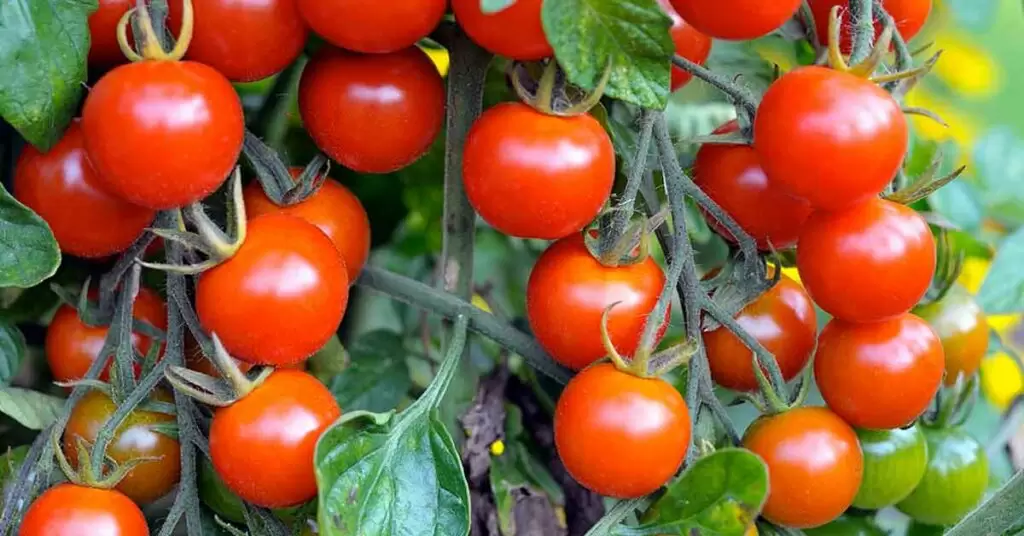The vertical garden is an ideal system for those people who want to have plants in their home, but don’ t have the space to do it the traditional way. By using vertical structures that are installed on the walls, it is possible to plant horticultural or ornamental plants easily and quickly. This type of planting is generally used in urban areas, where the spaces destined for housing are small and there is a high population density. Let’s see the advantages of having a vertical garden in your house, how to install one, the plants that can be planted in them and how you can get the most out of it.
Advantages of having an upright garden
 Having a vertical garden has many advantages for the decision maker. However, many of them are not obvious to us.
To help you better analyse the advantages of having a vertical garden, we have listed some of its benefits:
Having a vertical garden has many advantages for the decision maker. However, many of them are not obvious to us.
To help you better analyse the advantages of having a vertical garden, we have listed some of its benefits:
- We contribute to the environment by helping to reduce carbon emissions.
- We promote the conscious use of natural resources among our family and friends.
- Do you live in a hot area? Installing a vertical garden helps to lower the temperature indoors. This effect can lead to a reduction in energy consumption and – as a consequence – in the electricity bill.
- You integrate self-consumption into your daily life, reducing the intake of food treated with chemicals and fertilizers.
- In addition, plants have the ability to filter and clean the air, so your spaces will be fresher and cleaner.
- Finally, it is worth highlighting the decorative contribution you will make to the interior of your home by simply installing a vertical garden.
Tips to make your vertical garden a success
 Building a vertical garden, as we saw, generates a positive impact at home. But to make the most of its capacity, we need to have a plan on the structure and the plants we are going to plant.
Let’s start by looking at the featured tips for building a vertical garden in your flat.
Building a vertical garden, as we saw, generates a positive impact at home. But to make the most of its capacity, we need to have a plan on the structure and the plants we are going to plant.
Let’s start by looking at the featured tips for building a vertical garden in your flat.
- The place where you install the vertical garden should have the necessary natural lighting and should be easily accessible. Remember that the vegetable garden needs minimum but necessary maintenance.
- You should know what type of plant you can plant in your garden. Take into account the climatic conditions, height and the areas where natural light enters.
- Another aspect to consider is the harvesting season of each plant. It’s better to plant plants in your vertical garden that maximize their use and not those that offer their fruits for a short time each year.
- The design of the structure of your vertical garden will be crucial for the growth of your plants. Before defining a design, you must be sure that it works for your plans.
- Water and substrate, as you can imagine, are fundamental to the success of your vertical garden. Make sure watering doesn’t affect the structure or walls. As for the substrate, select the one that best suits your plants.
- Vertical gardens don’t have an expiry date , but you should be careful to ensure that everything goes according to plan. If the orchard and any pots deteriorate, replace them and avoid them becoming a major problem.
Ideas for building a vertical garden at home
 The construction of a vertical garden can be done in two ways: either by doing it or by buying one that has already been made.
There are many shops where you will get vertical garden sales. However, as you know, there is nothing better than building something with our own hands.
If you decide to make your own vertical garden, you will be faced with two new possibilities: using recycled materials or buying everything in the shop.
The installation of a vertical garden is very much related to the care of the environment. For this reason, always consider -as a first option- using recycled material to make your structure.
For example, you can use an old wooden pallet with plastic bottles as pots to make a beautiful vertical garden.
Don’t you have a wooden pallet? No problem, you can install plastic bottles with the help of strong ropes. This structure will allow you to use a whole wall with a striking vertical garden.
Another idea is to use an old shoe box, where every space for your shoes would be like a pot.
If you want to plant under hydroponic methods, you can make a structure with the help of PVC plastic pipes, which ensure that there is no liquid spillage or uncontrolled moisture.
The ideas for building a vertical garden are very varied and you are sure to find one that fits your space, needs and style of decoration.
The construction of a vertical garden can be done in two ways: either by doing it or by buying one that has already been made.
There are many shops where you will get vertical garden sales. However, as you know, there is nothing better than building something with our own hands.
If you decide to make your own vertical garden, you will be faced with two new possibilities: using recycled materials or buying everything in the shop.
The installation of a vertical garden is very much related to the care of the environment. For this reason, always consider -as a first option- using recycled material to make your structure.
For example, you can use an old wooden pallet with plastic bottles as pots to make a beautiful vertical garden.
Don’t you have a wooden pallet? No problem, you can install plastic bottles with the help of strong ropes. This structure will allow you to use a whole wall with a striking vertical garden.
Another idea is to use an old shoe box, where every space for your shoes would be like a pot.
If you want to plant under hydroponic methods, you can make a structure with the help of PVC plastic pipes, which ensure that there is no liquid spillage or uncontrolled moisture.
The ideas for building a vertical garden are very varied and you are sure to find one that fits your space, needs and style of decoration.
Plants and seeds for vertical gardens
 As we mentioned, the idea is that you get the most out of a vertical garden and not just use plants that bear fruit during a few weeks of the year.
Another reality that you must take into account is the type of plant to be planted. Not all of them grow successfully in small spaces, so lean towards seeds for an upright garden.
Our recommendation is that you should choose from the following plant species:
As we mentioned, the idea is that you get the most out of a vertical garden and not just use plants that bear fruit during a few weeks of the year.
Another reality that you must take into account is the type of plant to be planted. Not all of them grow successfully in small spaces, so lean towards seeds for an upright garden.
Our recommendation is that you should choose from the following plant species:
- Lettuce: It’s one of the easiest plants to grow, which makes it perfect for vertical gardens. They will adapt to the environment you offer them and you will have, in a few weeks, fresh lettuce for your healthy meals.
- Turnips: Place 10-12 turnip seeds and – after a few weeks – you’ll start enjoying this delicious ingredient for your meals.
- Strawberries: An ideal ingredient for a powerful breakfast is strawberries. You can grow it without complications in your vertical garden and enjoy its flavour alongside your cereals, smoothies or desserts.
- Tomatoes: It is also possible to grow tomatoes in a vertical garden. You can try various types of tomatoes and bring them to life in your recipes.
- Chives: If you are a chives lover, you should know that this is a perfect plant to grow in vertical gardens. After you try your home-grown chives, you will never want to stop planting them.
- Spinach: Spinach, a versatile vegetable that can be used in a wide variety of dishes, can be planted in an upright garden. When considering the plants you’ll plant, don’t hesitate to include it.
- Peppers: Another special ingredient of Mediterranean cuisine is the pepper. It’s perfect for growing in an upright garden. It grows without complications and is easy to maintain.
Green products to contribute to the planet
 If you move in the green wave and you are concerned about reducing your impact on the environment, we invite you to visit our Greenuso online shop.
Here you can find all kinds of articles to equip your kitchen without harming the environment.
Biodegradable tableware, reusable glasses, bamboo trays, ecological straws, are some of the products you can find on our virtual shelves.
To make your purchase more comfortable, we have a delivery service to the address of your preference, where you will receive your products in a maximum time of 48 hours.
Visit Greenuso and make sure you have what it takes to reduce your carbon footprint on the planet.
If you move in the green wave and you are concerned about reducing your impact on the environment, we invite you to visit our Greenuso online shop.
Here you can find all kinds of articles to equip your kitchen without harming the environment.
Biodegradable tableware, reusable glasses, bamboo trays, ecological straws, are some of the products you can find on our virtual shelves.
To make your purchase more comfortable, we have a delivery service to the address of your preference, where you will receive your products in a maximum time of 48 hours.
Visit Greenuso and make sure you have what it takes to reduce your carbon footprint on the planet.

